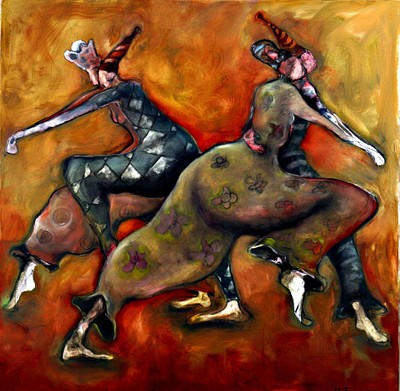ROMERO BRITTO : ROMERO BRITTO: Martini, stone mosaic
Lot 119
Estimate:
$5,000 - $7,000
Absentee vs Live bid
Two ways to bid:
- Leave a max absentee bid and the platform will bid on your behalf up to your maximum bid during the live auction.
- Bid live during the auction and your bids will be submitted real-time to the auctioneer.
Bid Increments
| Price | Bid Increment |
|---|---|
| $0 | $10 |
| $200 | $20 |
| $320 | $30 |
| $380 | $20 |
| $420 | $30 |
| $480 | $20 |
| $500 | $50 |
| $1,000 | $100 |
| $2,000 | $200 |
| $3,200 | $300 |
| $3,800 | $200 |
| $4,200 | $300 |
| $4,800 | $200 |
| $5,000 | $500 |
| $10,000 | $1,000 |
| $20,000 | $2,000 |
| $32,000 | $3,000 |
| $38,000 | $2,000 |
| $42,000 | $3,000 |
| $48,000 | $2,000 |
| $50,000 | $5,000 |
| $100,000 | $10,000 |
| $200,000 | $20,000 |
| $320,000 | $30,000 |
| $380,000 | $20,000 |
| $420,000 | $30,000 |
| $480,000 | $20,000 |
| $500,000 | $50,000 |
About Auction
By Avenue Auctions
Oct 6, 2023
Set Reminder
2023-10-06 18:00:00
2023-10-06 18:00:00
America/New_York
Bidsquare
Bidsquare : FALL for ART
https://www.bidsquare.com/auctions/avenue-auctions/fall-for-art-13817
An International Art Collection Avenue Auctions psykes123@gmail.com
An International Art Collection Avenue Auctions psykes123@gmail.com
- Lot Description
Romero Britto was born in Recife, Brazil in 1963. There is an almost fairy-tale quality to his story. As a creative yet impoverished child from Brazil, Britto often painted images on scraps of cardboard and newspaper. At first, he did not understand art as a profession until his older brother brought home books about famous artists like Toulouse Lautrec. Britto began copying the works of these masters from the books he got from his brother day after day. In the beginning, art was an outlet Britto used to escape even through his teenage years and early twenties when Romero was working toward entry into law school. Romero has explored many media including watercolor, pen and ink, serigraphy, lithography, acrylic, and even finger paint. He had drive and passion to excel and prospered academically, but Britto was continuously pulled toward his creative roots with a determination to learn & succeed, Britto traveled from Brazil to Europe and then from Europe to the United States to exhibit and sell his art.In 1988, Britto moved to Miami and emerged as an international artist. The following year in 1989, he was selected to add a splash of color to Absolut Vodka's "Absolut Art" campaign. This incredible opportunity catapulted Romero Britto into the limelight, placing him alongside artists such as Andy Warhol and Keith Haring. Other commissions followed including: Grand Marnier, Apple Computers, Pepsi Cola, IBM, Disney, a United Nations postage stamp series, Britto Mini Cooper for BMW, Audi, Bentley, Movado, Volvo, Campari, the Mariner of the Seas for the Royal Caribbean Cruise Line, and most recently, BankAtlantic Florida's Most Convenient Bank and FIFA, for whom he created an official poster for the 2010 World Cup. He has also illustrated several books published by Simon & Schuster and Rizzoli. Collectors of Romero's work include Michael Jordan, Arnold Schwarzenegger, and Andre Agassi as well as the Guggenheims, Rothschilds, Kennedys, Mitterands and former Whitney Museum President, William Woodside. He has been featured in many articles published in Forbes, Vanity Fair, The New Yorker, ARTNews, and more. Today, the heir apparent of neo-pop cubism holds an extraordinarily bright future in the palms of his talented hands.The label ?eo-pop cubism,?ndicates Britto's links with certain artists and antecedent styles, Pop Art was a movement that began in the mid 1950's. It combines images of popular culture taken from the mass media with art. The cubist elements in Britto's work should hardly surprise critics; few artists in modern times have escaped the long shadows cast by Picasso and Braque, Britto's individual style has emerged from these influences; while he incorporates his own style using vibrant colors, pop imagery, & playful patterns of flowers and swirls as well as an inventive use of his signature within his paintings. Vital to the essence of Britto's art is its unrestrained optimistic outlook on life. His work embodies the expressionist color patterns of the Fauves, the multi-dimensional facets of Cubism, and the reference to mass culture in Pop Art. With clean, bold, and colorful imagery, Britto subtly delivers strong, poignant messages in a refreshing, joyful and upbeat manner.Over the years, Britto has lent his talent and energy to many philanthropic causes. In the winter of 2004, a Britto original, Volvo V50 brought $71,500 at live auction to benefit Best Buddies International in Miami, Florida. It is a tremendous personal reward for Britto that his art is capable of inspiring others to give. Britto considers the role of an artist to be an agent of positive change. He serves as a benefactor, donating time, art and resources to over 250 charitable organizations and several boards such as Best Buddies International, and St. Jude's Children's Research Hospital. He was recently named a founding inaugural benefactor of Harvard's "International Negotiation Program," by Dr. Daniel Shapiro, in his quest for peaceful conflict resolution. Britto has also spoken at the World Economic Forum in Davos, and at countless schools and institutions. In early 2011 the President of Brazil, Dilma Rousseff, invited Britto to create the logo for Rede Cegonha, a project to reach over 61 million pre and post-natal mothers and babies.To date, Britto's art is shown in 100 countries in over 140 galleries, including the Salon Nationale des Beaux-Arts exhibition at the Carrousel du Louvre in 2008 and 2010. He has also created public art installations for the O2 Dome (Berlin), Hyde Park (London), John F. Kennedy Airport (New York), and Cirque du Soleil at Super Bowl XLI.Good
Condition
- Shipping Info
-
Bidder Can Make Shipping Arrangements, Local Pick-Up, In-House Shipping
-
- Payment & Auction Policies
-
Available payment options
-
- Buyer's Premium



 EUR
EUR CAD
CAD AUD
AUD GBP
GBP MXN
MXN HKD
HKD CNY
CNY MYR
MYR SEK
SEK SGD
SGD CHF
CHF THB
THB













